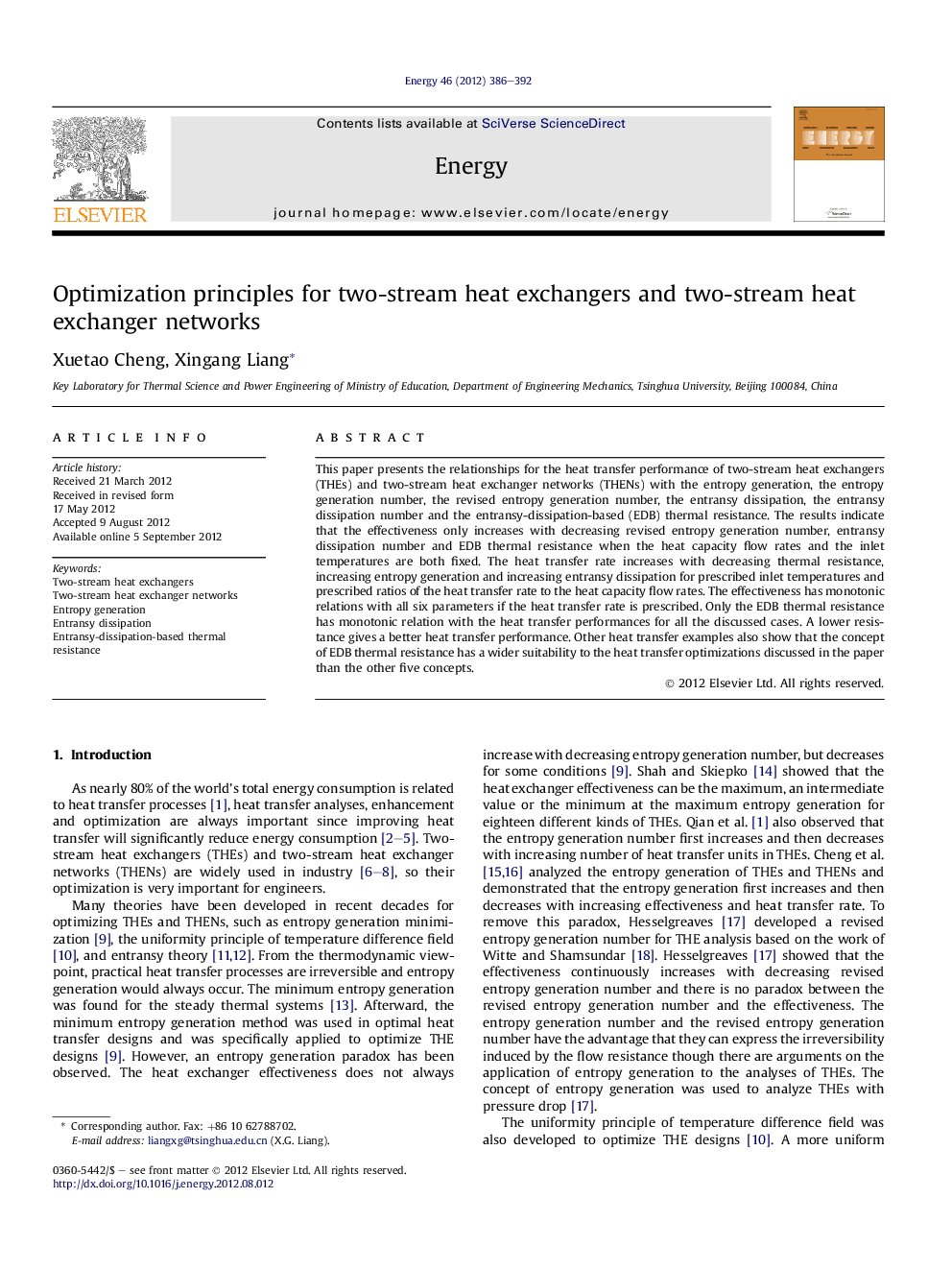| Article ID | Journal | Published Year | Pages | File Type |
|---|---|---|---|---|
| 1733432 | Energy | 2012 | 7 Pages |
This paper presents the relationships for the heat transfer performance of two-stream heat exchangers (THEs) and two-stream heat exchanger networks (THENs) with the entropy generation, the entropy generation number, the revised entropy generation number, the entransy dissipation, the entransy dissipation number and the entransy-dissipation-based (EDB) thermal resistance. The results indicate that the effectiveness only increases with decreasing revised entropy generation number, entransy dissipation number and EDB thermal resistance when the heat capacity flow rates and the inlet temperatures are both fixed. The heat transfer rate increases with decreasing thermal resistance, increasing entropy generation and increasing entransy dissipation for prescribed inlet temperatures and prescribed ratios of the heat transfer rate to the heat capacity flow rates. The effectiveness has monotonic relations with all six parameters if the heat transfer rate is prescribed. Only the EDB thermal resistance has monotonic relation with the heat transfer performances for all the discussed cases. A lower resistance gives a better heat transfer performance. Other heat transfer examples also show that the concept of EDB thermal resistance has a wider suitability to the heat transfer optimizations discussed in the paper than the other five concepts.
► Minimum thermal resistance relates to best heat transfer. ► Entropy generation is not always appropriate to optimize heat transfer. ► Application of entransy dissipation to heat transfer optimization is conditional. ► Minimum entropy generation number does not always relate to best heat transfer. ► Application of revised entropy generation number is also conditional.
